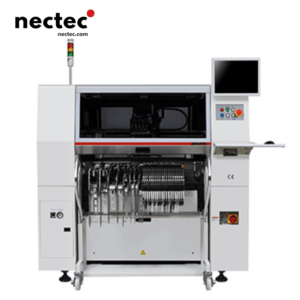In recent years, the manufacturing landscape in the UK has undergone significant transformation, driven by the need for increased efficiency, reduced labor costs, and enhanced productivity. One of the key players in this transformation is the pick and place machine. These machines are revolutionizing assembly lines across various sectors, providing a compelling solution to the challenges faced by manufacturers.
Memahami Mesin Pilih dan Tempatkan
Pick and place machines are automated systems that handle the placement of components onto substrates or boards. They are widely used in industries such as electronics, automotive, and consumer goods. These machines utilize advanced robotics and vision systems to accurately and efficiently position components with precision, significantly improving output rates and reducing error margins.
Keuntungan Menerapkan Teknologi Pick and Place
1. Peningkatan Efisiensi dan Kecepatan
One of the primary advantages of pick and place machines is their ability to operate at high speeds without sacrificing accuracy. Traditional manual methods can be time-consuming and prone to errors. In contrast, automated systems can quickly pick components from trays and place them precisely where needed. This increased speed translates directly into higher production volumes and a faster turnaround time for orders.
2. Peningkatan Akurasi dan Konsistensi
Pick and place machines are designed with state-of-the-art computer vision and sensors that ensure components are placed with meticulous precision. This level of accuracy reduces the likelihood of defects, which can be costly in terms of both materials and time. Consistency in production quality is crucial, especially in industries such as electronics, where even minor discrepancies can lead to significant failures.
3. Efektivitas Biaya
Although the initial investment in a pick and place machine may seem substantial, the long-term savings can be tremendous. By increasing production rates and decreasing the need for manual labor, these machines often lead to a reduction in operational costs. Furthermore, the ability to quickly adapt to different tasks means that manufacturers can optimize their production lines for various projects without extensive retooling.
Aplikasi Mesin Pilih dan Tempatkan
The applications of pick and place machines are vast and varied, making them a staple in many sectors of the manufacturing industry. Here are a few prominent examples:
1. Manufaktur Elektronik
In the electronics industry, pick and place machines are used to assemble circuit boards, positioning tiny components with extreme accuracy. This sector, owing to its fast-paced nature, benefits immensely from the efficiency and reliability provided by automated systems. Modern machines can handle a diverse range of components, from small chips to larger connectors, optimizing the assembly process for any scale of production.
2. Industri Makanan dan Minuman
In the food sector, pick and place technology is applied to packaging processes, where products must be efficiently and hygienically placed in containers. Machines in this field often integrate features to meet health and safety regulations, ensuring that the equipment remains compliant while enhancing workflow. This not only streamlines the production line but also maintains the integrity of the food products.
3. Sektor Otomotif
The automotive industry utilizes pick and place machines for various assembly tasks, including the installation of components such as sensors and wiring harnesses. The need for precision in automotive assembly makes pick and place technology invaluable, particularly as vehicles incorporate more sophisticated electronics and safety systems.
Masa Depan Teknologi Pilih dan Tempatkan
The future for pick and place machines looks promising, with advancements in technology continually improving their capabilities. Here are a few trends shaping this sector:
1. Integrasi AI dan Pembelajaran Mesin
With the rise of artificial intelligence (AI) and machine learning, future pick and place machines will likely become even more efficient. AI can optimize the pick-and-place process by assessing the best methods for handling various components and adapting to different production environments. This adaptability will further enhance the speed and accuracy of assembly lines.
2. Robot Kolaboratif (Cobot)
Collaborative robots, or cobots, are designed to work alongside human operators, making them an excellent complement to pick and place machines. These robotic systems enhance productivity by taking on repetitive and physically demanding tasks while leaving complex decision-making to human workers. This combination allows for a more ergonomic and efficient workflow, with cobots capable of seamlessly integrating with existing machinery.
3. Sistem Manufaktur yang Fleksibel
The concept of flexible manufacturing systems (FMS) is gaining traction, where machines can be customized and programmed to handle various tasks. Pick and place machines will evolve to fit into these systems, allowing manufacturers to pivot quickly between different products and production lines. This flexibility is crucial in today’s fast-moving market, where consumer demands and technology inevitably change.
Memilih Mesin Pick and Place yang Tepat untuk Bisnis Anda
Selecting the ideal pick and place machine for your manufacturing needs requires careful consideration of several factors:
1. Volume Produksi
Determine the volume of production necessary for your operations. Different machines cater to various production quantities and speeds, so selecting one that meets your output requirements is crucial.
2. Ukuran dan Jenis Komponen
Evaluate the types of components you will be handling. Ensure that the pick and place machine you choose can accommodate the sizes and weights of your components effectively.
3. Anggaran
Establish a budget for your investment in automation. Reflect on the long-term savings and increased efficiency a pick and place machine can bring before making your decision.
Kesimpulan
The adoption of pick and place machines signifies an exciting era for manufacturers in the UK, ushering in advancements that enhance productivity and quality. As technology continues to evolve, so too will the capabilities of these machines, catering to the increasingly complex demands of modern manufacturing.








